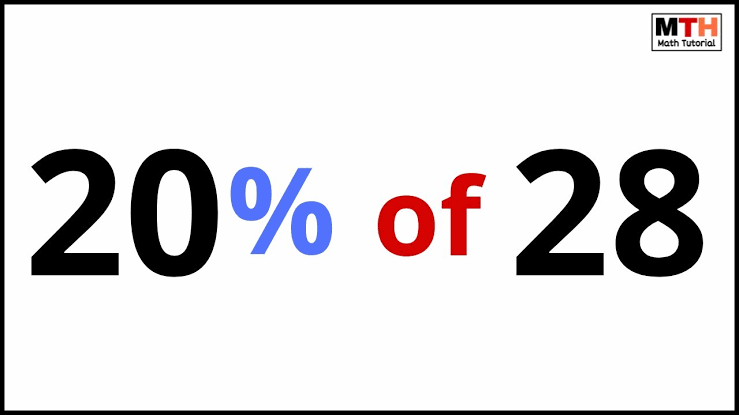Introduction
Ever come across the phrase 20 of 28 and wondered what it means? You’re not alone. Whether it’s a statistic, a puzzle, or a significant fraction in a larger set, 20 of 28 often represents an important part of a whole. But what exactly does it refer to? In this blog post, we’ll break it down in simple terms, explore different contexts where it appears, and why it matters to you.
By the time you finish reading, you’ll have a clear understanding of 20 of 28, its potential meanings, and how it relates to real-life situations. Let’s dive in!
What Does “20 of 28” Mean?
The phrase 20 of 28 is a numerical expression that indicates a fraction or percentage of something. Mathematically, it represents:
- A fraction: 2028\frac{20}{28}2820 simplifies to 57\frac{5}{7}75.
- A percentage: (20÷28)×100≈71.4(20 ÷ 28) × 100 \approx 71.4%(20÷28)×100≈71.4.
- A ratio: It can be expressed as 20:28 or 5:7.
But numbers don’t exist in a vacuum. They always relate to something specific. Here are a few common ways 20 of 28 could be used:
1. Sports & Performance Stats
- A player made 20 out of 28 free throws in a basketball game.
- A team won 20 out of 28 matches in a season.
- A baseball batter hit 20 balls out of 28 pitches successfully.
2. Academic & Test Scores
- A student answered 20 out of 28 questions correctly on a test.
- A class project required 28 tasks, and 20 were completed.
3. Surveys & Poll Results
- 20 out of 28 people preferred a particular brand in a consumer survey.
- 20 of 28 voters agreed on a decision in a committee.
4. Health & Fitness Goals
- A person hit their daily step goal 20 out of 28 days in a month.
- A fitness challenge required 28 workouts, and 20 were completed.
Why Does “20 of 28” Matter?
At first glance, 20 of 28 might seem like just another number. However, depending on the context, it can indicate success, failure, trends, or progress.
1. It Shows Progress
If you’re working toward a goal, 20 of 28 means you’re about 71% of the way there. That’s a solid effort! Whether it’s training for a marathon or sticking to a diet, seeing progress in numbers helps keep motivation high.
2. It Highlights Trends
In sports or business, numbers tell stories. If a basketball player hits 20 of 28 shots, that’s an impressive 71% shooting accuracy. If a marketing campaign got 20 of 28 positive reviews, it’s performing well.
3. It Helps Decision-Making
Let’s say a survey finds that 20 of 28 people prefer Product A over Product B. That’s a strong majority (71%), meaning Product A has a better chance of succeeding in the market.
4. It Measures Success & Failure
Imagine a student scoring 20 out of 28 on a test. That’s about a C+ or B- grade—decent but room for improvement. If a company completes 20 of 28 project milestones, it means they’re on track but not quite finished.
How to Improve If “20 of 28” Isn’t Enough
Maybe 20 of 28 isn’t the score you wanted. Here’s how you can push that number up:
- Identify Weak Areas – Figure out why the missing 8 weren’t achieved.
- Set Clear Goals – Aim for 25 of 28 next time.
- Track Progress – Monitor numbers regularly.
- Make Adjustments – Change strategies to improve results.
Conclusion
At its core, 20 of 28 is a numerical expression that represents progress, trends, and decisions in various contexts. Whether you’re tracking performance, making choices, or analyzing results, understanding numbers like these helps in everyday life.
If 20 of 28 represents a success, celebrate it! If it highlights a shortfall, use it as motivation to improve. Either way, numbers tell a story—make sure yours is a good one.
FAQs About “20 of 28”
1. What percentage is 20 of 28?
It’s approximately 71.4%.
2. Is 20 out of 28 a good score?
It depends on the context. In a test, it’s around a C+ or B-. In sports, it might be great depending on the situation.
3. How can I improve my 20 of 28 performance?
- Analyze what went wrong with the missing 8.
- Adjust your strategy for better results.
- Track your progress over time.
4. Where do we commonly see “20 of 28”?
In sports, academics, business surveys, fitness tracking, and goal setting.
5. Why does this number matter?
It provides a quantitative measure of success and helps track progress.
Now that you know what 20 of 28 means and why it matters, how will you use it in your life? 🚀





